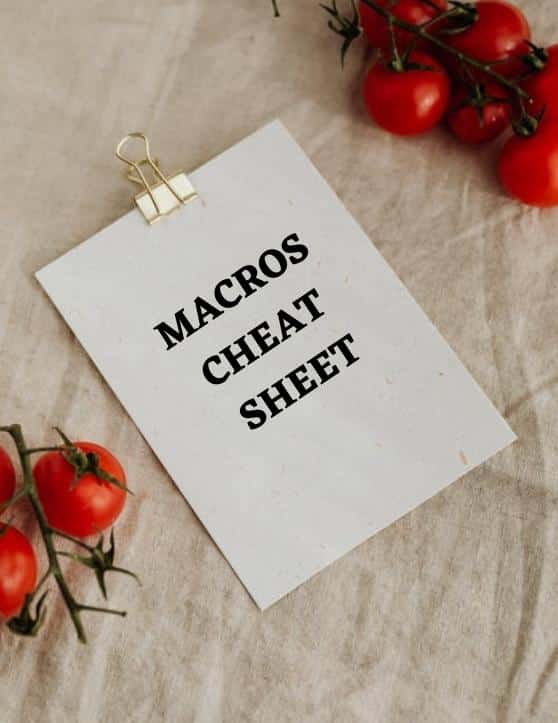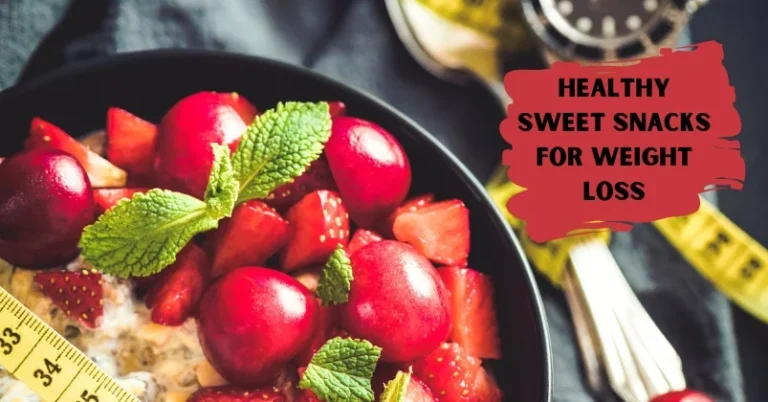Macros Cheat Sheet: Ultimate Guide
Macros (Macronutrients – carbohydrates, fats, and proteins.) are the essential nutrients consumed in larger amounts in the diet than micronutrients (vitamins and minerals.) The amount of intake of each macronutrient varies from person to person based on their genetics and activity levels. Each macronutrient has a calorific value (Protein – four calories per gram, Carbohydrates – four calories per gram, and Fat nine calories per gram) and hence, it is significant that you take them adequately.
An optimal macros intake can help you maximize muscle strength and growth and minimize fat gain. A well-trained nutritionist may track the exact measure of macros necessary for intake. We would love to save you time and money by coming up with our macro cheat sheet that guides you plan your macronutrient intake, which will eventually improve your overall health and guide you through the path of weight loss.
What Are The Functions Of Macronutrients?
Macronutrients, namely Protein, Fat, and Carbohydrates, are the primary energy sources for the human body. They are needed for growth, metabolism, and other body activities. Below are the functions of carbohydrates, proteins, and fats in the body.
Functions Of Carbohydrates
Carbohydrates contain Carbon, Hydrogen, and Oxygen. Their main functions are:
- They supply energy to all cells in the body. They are broken down into glucose and are absorbed by the cells as the source of energy.
- They help maintain the function of the brain, kidneys, nervous system, and muscles.
- They store glucose as glycogen in muscles and the liver, which can be used later when there is a need for energy.
- They prevent ketosis.
- They limit the use of lipids as an energy source and help in digestion.
Functions Of Proteins
Proteins are the building blocks of the body. Proteins are digested into amino acids, which play a vital role in building muscles and acting as an energy source for your body. Here are some of the prime functions of proteins (amino acids).
- It helps in the growth of the body.
- Repairs tissues and muscles
- Maintains immune system.
- Produces essential hormones and enzymes
- Provides essential amino acids
- Maintains proper acid-base balance
- Acts as an energy source when carbohydrates are not sufficient.
Functions Of Fats
Many think that fat is bad. The answer is No. An excess accumulation of fat is only bad for the body. But fat is a necessary macronutrient that is essential for the healthy functioning of the body. Here are some significant functions of fats
- They help in average growth and development.
- They are a source of energy.
- They help in cell maintenance.
- They assist in the absorption of vitamins and minerals.
- They help protect organs.
- They keep the body warm.
- They help in hormone production.
Macronutrients Vs. Micronutrients
- Macronutrients mainly include carbohydrates, fats, and proteins. Micronutrients include vitamins, minerals, and trace elements. Macronutrients are required in large quantities whereas micronutrients are needed in small amounts.
- Macros are essential for growth. They repair and develop new tissues. Macros mainly support the micronutrients to perform metabolism, cell growth and maintenance, and other functions of the body.
- Macronutrients provide energy to the entire body. Micronutrients protect the body from diseases.
- Macronutrients are nontoxic to cells, even if they are present in large quantities. Micronutrients are toxic to the cells if present excessively.
- Macros deficiency causes Protein Energy Malnutrition(PEM), marasmus, etc. Micros deficiency causes diseases like night blindness, rickets, goiter, scurvy, nerve damage, etc.
How To Use Macros Cheat Sheet?
Macros Sheets help to track the macros you intake with ease. These Cheat Sheets allow you to add all the macronutrients in your food throughout the day. Macros cheat sheet helps to make up your favorite food by combining your macronutrients in an optimal ratio. The federal dietary recommendations suggest we intake
- Carbohydrates – 45 to 60%
- Fats – 20 to 30%
- Proteins – 10 to 35%
To use the macro cheat sheet, we must identify the food sources of these nutrients, which would help us derive the right recipe.
The calorific value of each macronutrient is
- Carbohydrates – 4 calories per gram
- Proteins – 4 calories per gram
- Fats – 9 calories per gram
Foods Rich in Proteins
- Meat and meat products – beef, chicken, lamb, pork, turkey
- Fish and seafood
- Eggs
- Dairy food such as milk and yogurt
- Beans and pulses
- Nuts
- Soy and tofu products.
Foods Rich in Fats
- Meat fat
- Butter
- Full-fat dairy products
- Coconut oil and products
- Peanut oil, palm oil, and cottonseed oil
- Fish
- Nuts
- Avocados
- Vegetable oils – olive, canola, sunflower, rice bran
Foods Rich in Carbohydrates
- Sugar and honey
- Bread, rice, pasta, oats, quinoa, couscous
- Starchy vegetables – sweet potatoes, corn, and pumpkin
- Beans and pulses – chickpeas, baked beans, lentils
- Fruits – banana
- Dairy foods – milk and yogurt.
Macros Diet: Food Suggestions
Let's see a few macro-friendly food suggestions. These recipes combine proteins, carbohydrates, and fats to form a nutritionally balanced diet. This sheet will help you plan your favorite food.
| RECIPE | SERVINGS | CARBS | PROTEINS | FAT |
|---|---|---|---|---|
| Easy Lentil Meatballs | 3 Meatball | 19g | 7g | 3g |
| Protein Cookies | 1 Cookie | 21g | 6g | 8g |
| Baked Chicken Parmesan | Per serve | 20g | 48g | 11g |
| Macro-Friendly Pizza | Per serve | 42g | 67g | 10g |
| Breakfast Wonton Cups | Two cups | 23g | 31.5g | 9.5g |
| Skinny Southwestern Salad | Per serve | 22g | 27.4g | 8.7g |
| Coconut Rice with Turkey Patties | Per serve | 28g | 25g | 12g |
| Blackened Chicken with Pineapple Salsa | Per serve | 6g | 36g | 4g |
| Chicken and Avocado Burritos | Per Burrito | 37.2g | 40g | 24g |
Other suggestions include:
- Spicy Shrimp & Soba Noodle Stir Fry
- Healthy, Blueberry Compote, Banana Yogurt Parfait
- Easy, High Protein Banana Pancakes
- Swordfish W/ Roasted Beets On Top A Parsnip Puree
- Kiwi Banana Yogurt Bowl
- Easy, Greek Chicken One Skillet Meal
- Easy, Chicken And Black Bean Soup
- Garlic Butter chicken meatballs with cauliflower
- Protein Balls
- Spicy Chickpea & Quinoa Bowls
- Mexican Meal Prep Bowls With Cauliflower Rice
- Greek Couscous Salad
- Meal Prep Chicken Patties
- Garlic Shrimp And Tomato Rice
- Opti-Greens Apple Protein Juice
- Bacon Egg & Cheese Breakfast Cookies
- Chicken Burrito Skillet Recipe
- Zucchini & Ground Beef Orzo Casserole
- Greek Breakfast Quesadilla W/Spinach & Mushroom
- Puerto Rican Asopao, Chicken & Rice Stew
- Spiced Tomato & Coconut Chicken W/Basmati Rice
- Chicken And Asparagus With Lemon Caper Sauce
- Sweet & Sour Salmon
- Mango Salsa
- Halibut With Sweet Pea Puree
Bottom Line
I hope this cheat sheet helps you plan your diet and intake the right level of macronutrients.
Macronutrients are available in many food sources and are essential to provide the body with energy to perform daily activities. Consuming them in the right amount helps you to stay healthy and prevent diseases. You can mix and match foods on the list to ensure you hit your diet and weight-loss goals.








